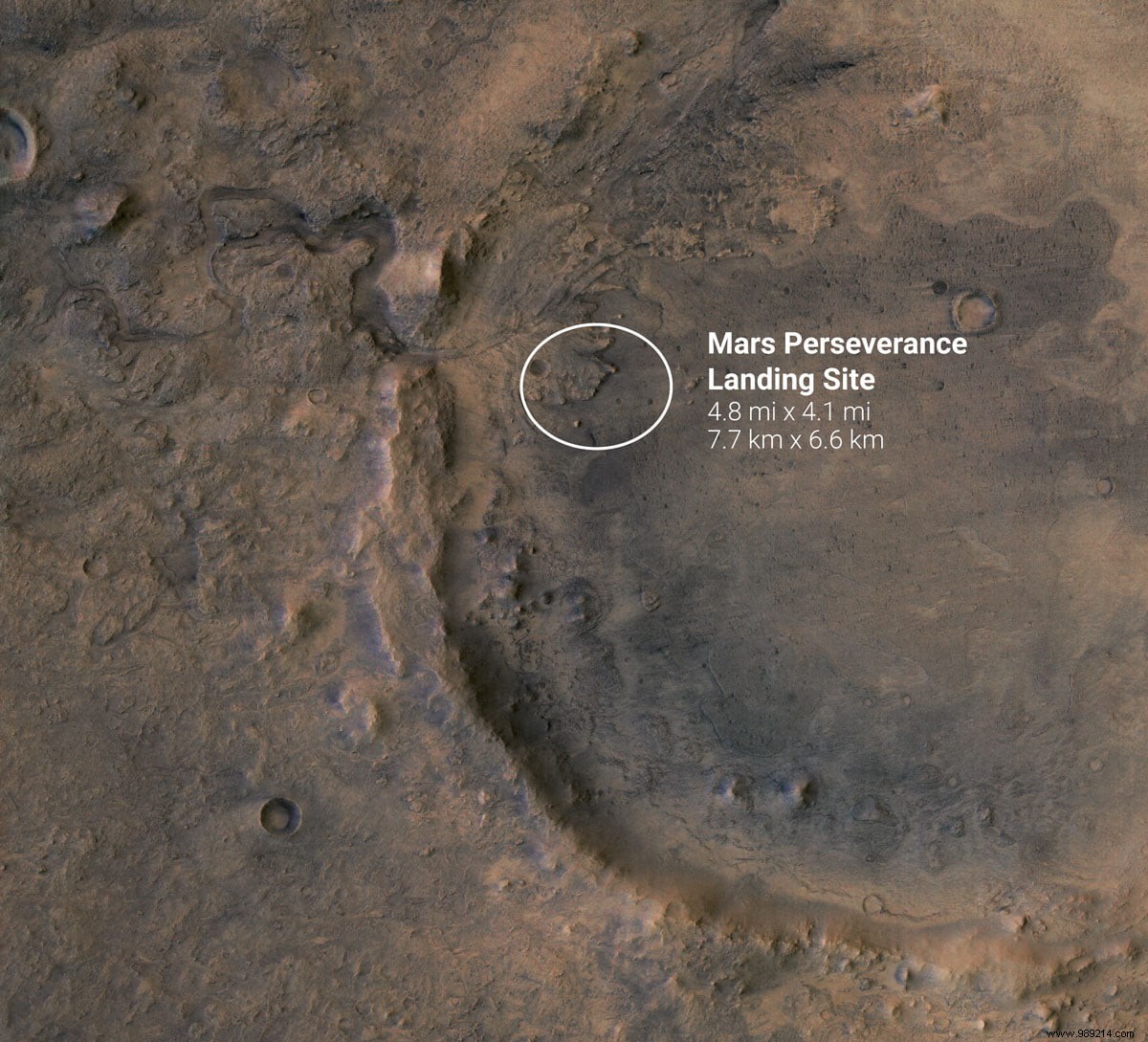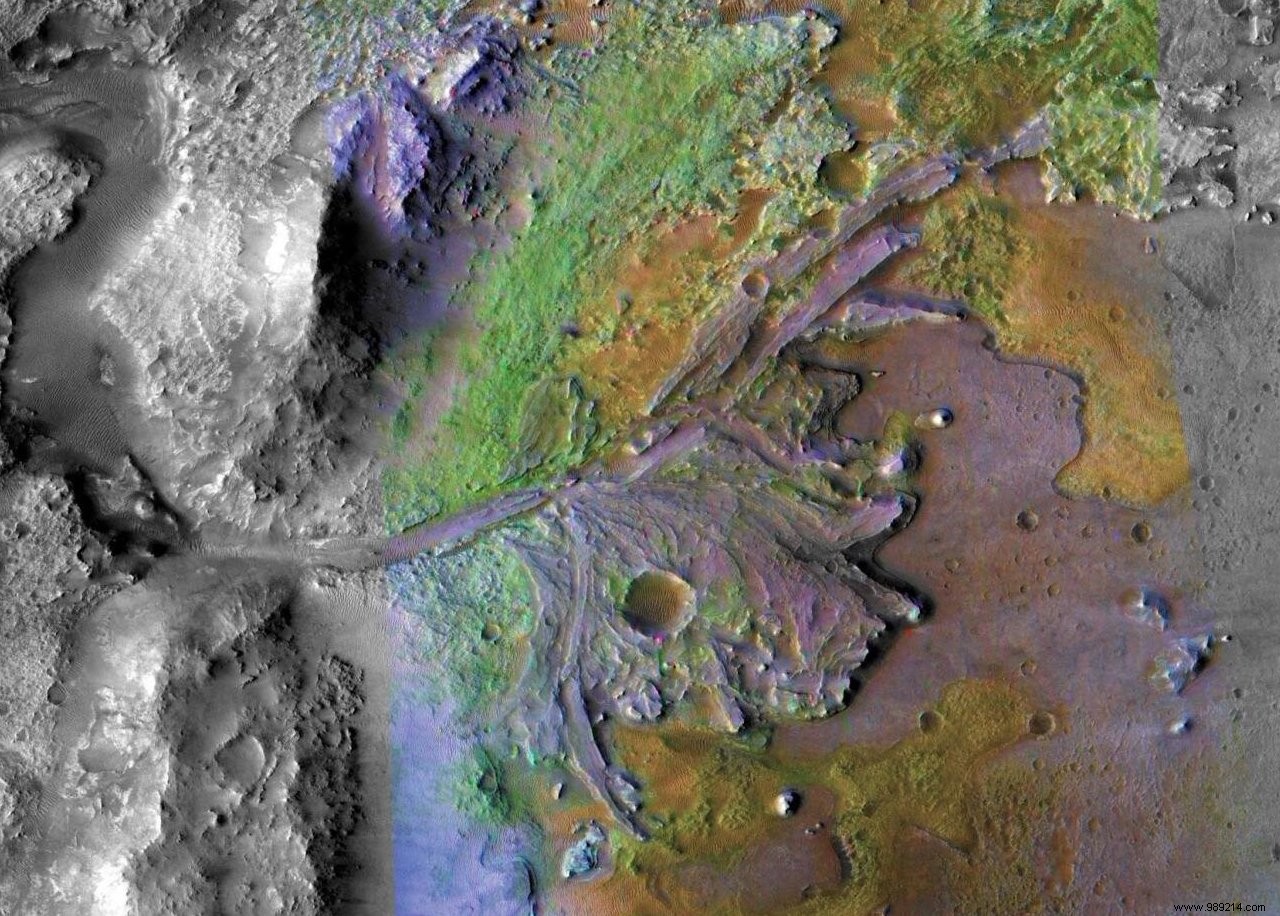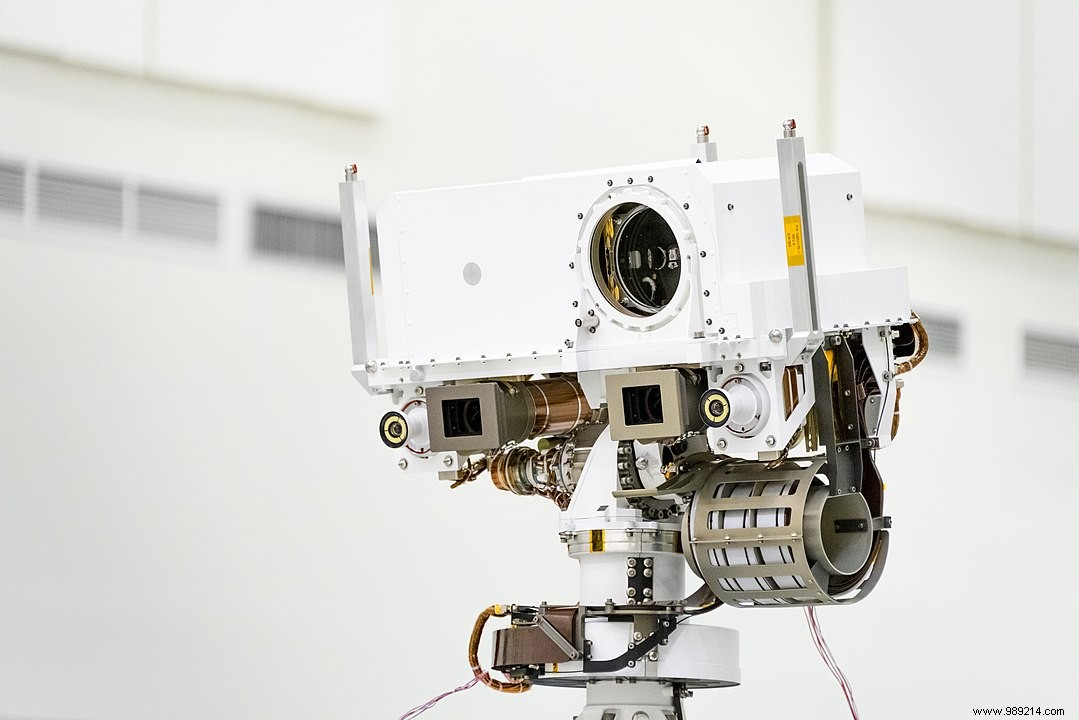The American Perseverance rover is preparing for its scheduled landing this Thursday. Its objectives will be to characterize the geology of the planet and its past climate, but also and above all to search for traces of past life buried in the ground. But what exactly is the rover going to probe?
Perseverance's long journey to Mars is coming to an end. Launched last July, the rover should land this Thursday, February 18 . Once there, its objectives will be to characterize the site, to explore the Martian geology, to measure the atmospheric and meteorological properties of the planet, but also to search for traces of microbial life that once evolved on the planet.
Indeed, we know from multiple previous missions that Mars was once habitable, like Earth, before eventually losing all of its water. That said, between three and four billion years ago, life may have had time to emerge, develop, and leave traces. The mission of the rover will be to probe them. It could be direct or organic chemical signs in rock composition and chemistry, like textural evidence in rock records.
For almost four years, researchers have wondered about the appropriate site. Eventually, NASA set its sights on Jezero Crater . Still thanks to previous missions, we know that this formation was once filled with water. And that at the entrance of this ancient great lake was a river delta .
On Earth, these shallow waters help preserve organic molecules burying them very slowly in the sediment. So if a Martian delta functions in the same way, and if indeed there was life in the ancient Martian rivers, then it's possible that this environment could have preserved the remains, or the traces of this microbial life from the ancient highlands, found above the crater.
Aside from the presence of water, Mars also had several sources of heat (volcanoes, asteroid impacts). In short, there are very few places in our solar system where traces of extraterrestrial life could be preserved. The Jezero crater is one of them. It also has the advantage of being "easily" accessible. Even if, we remind you, it is very complicated to land on Mars.


NASA having bet on a mission to return Martian samples, the researchers chose to retain not instruments capable of carrying out the most advanced analyses, but those capable of quickly and efficiently identifying the most interesting portions of soil.
To do this, Perseverance has a little new feature:the Mastcam-Z . It is an improved version of the Curiosity camera, equipped with a zoom allowing a magnification x 3. It also includes two separate lenses separated by 24.2 centimeters which will allow you to take very detailed stereo photos.
“Just as our left eye and right eye construct a three-dimensional image in our brain, Perserverance's zoom cameras are a left eye and a right eye. With this, we will be able to build a three-dimensional image of what the rover will see on Earth, when we get these images” , explains Jim Bell, of Arizona State University.
Thanks to these images and other selected instruments, researchers will be able to select the most promising sites. Once pre-determined, small cores five centimeters deep will be taken there to be analyzed by the rover using its two PIXL and SHERLOC spectrometers. He will then take care of hiding the most interesting samples for their future journey to Earth, where they can be analyzed with state-of-the-art instrumentation.

On the calendar side, we don't know the dates yet precise, but roughly, the course of the mission will consist of sending a new lander to Mars from 2026. Once landed, it will then deploy a new rover responsible for collecting the sample tubes set aside by Perseverance. These will then be placed in a small rocket which will then be placed in orbit around the planet. In the meantime, the ESA will send a probe which will collect these samples directly in orbit, before bringing them back to Earth in 2032.